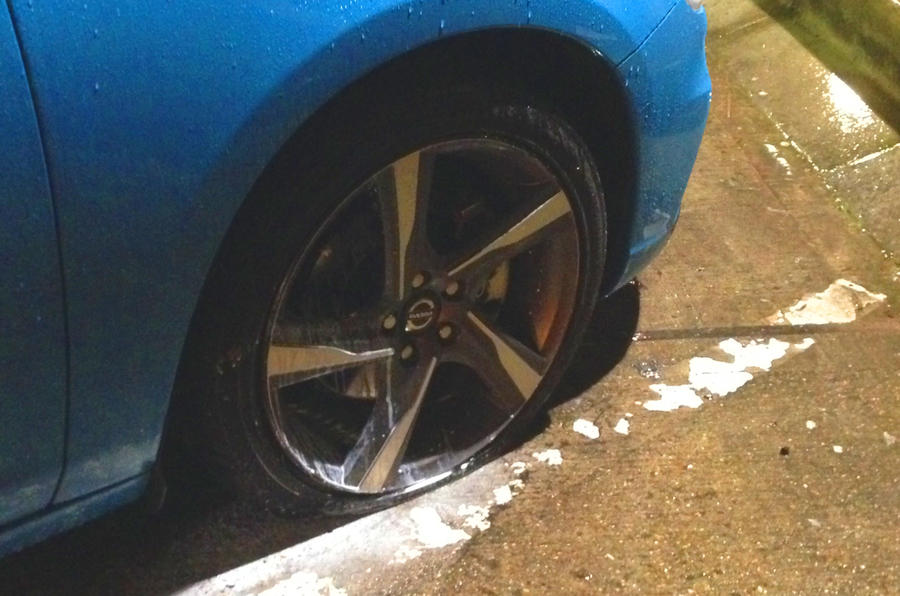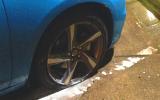It was the thud-a-thud-a-thud-a sound that gave it away.
Yes, the front off-side tyre in a Volvo V60 I was driving had divested itself of all of its air and the tyre was as flat as a day-old glass of Coke.
It was pouring with rain and still dark. Happily there was a petrol station two minutes away where I could do the necessary work, and get on my way.
Whether you get a spare wheel of any description is largely a lottery with most new cars these days. Standard-fit tyre foam is becoming the norm, with both space savers and full-size spare wheels relegated to the options lists.
I popped the boot, lifted the floor and, lo and behold, there's a small electric pump and a small bottle of white liquid that you screw in the top. A sticker on the side suggests that it's no harder to use than your own electric pump.
But after covering my hands, and a significant proportion of the petrol station, in the fluid after it transpired that it hadn't fully attached to the tyre valve, it became obvious this was a lost cause. Foam is fine at filling small holes, even if it's in a get-me-home kinda way. But no amount of it would repair a puncture of this size.
So there I was, sitting in a petrol station, eyeing up a healthy pasty-based meal, waiting for the recovery truck to take me to a dealer and replace the tyre.
Car makers say it helps reduce weight, therefore improving CO2 emissions and fuel consumption, and helps with maximising boot space.
That's fine, but this morning, I would have traded all of that for the ability to carry on my journey.
Yes, changing a tyre can be an unpleasant, messy, and depending where you do it, a dangerous activity, but one that would take far less time, and avoid a callout to the Volvo's breakdown department (who, it should be said, were enormously helpful).
Do you find puncture repair kits easier to use? Or, like me, would you prefer car makers to supply something more tyre-shaped?










Join the debate
Add your comment
Enable us to vote with our feet
What is needed is a list of makes and models where this is still an option.
With this I, for one, would vote with my feet!
When a new model car lunch in
Run Flats , how many miles will they run for in an emergency
It would be a useless situation ,if that is the case ,on a motorway or longer journey even for the run flats.